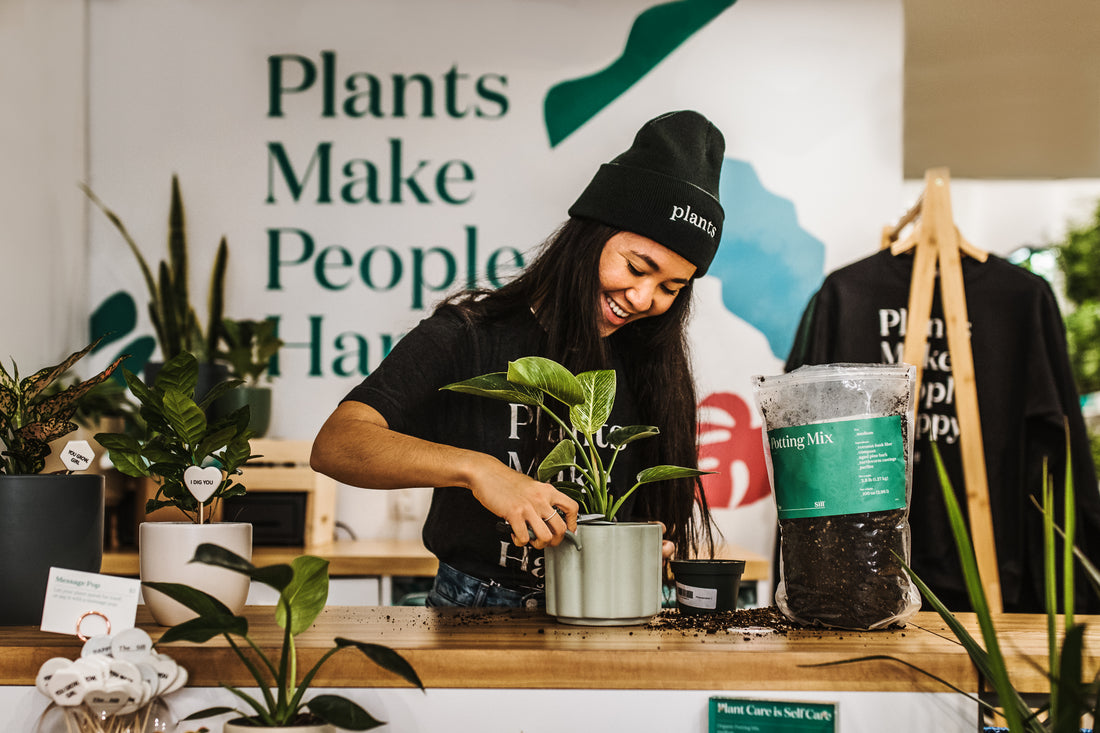
Plants 101
7 Tips for Caring for Houseplants in the Winter
As the seasons change outside, your plant care routine should change inside. Indoor plants are affected by outdoor changes. In this article, we share top tips and tricks for keeping your indoor houseplants alive during the long, dark winter.

As the seasons change outside, your plant care routine should change inside. We’re sharing easy tips and tricks for keeping your indoor houseplants alive during the long, dark winter months.
Bringing the outdoors in with houseplants is an easy, natural way to beat the winter blues. In this article, we’ll cover our top 7 tips for caring for indoor plants during the winter time.
Tip 1: Increase Light
If it feels like we rarely see the sun in the winter, that’s because it sets earlier, is lower in the sky, and is often covered with clouds. Make sure your houseplants are getting enough light during this time. Most plants will adjust to the seasonal change in their current spot, while others might need to be moved closer to their light source, the window, to receive more light. If plants are visibly leaning towards the window, gradually rotate them every few days to help them straighten out. If plants have spindly new growth, move them closer to the sill. You can also consider adding some supplemental lighting to your space with a grow light.
Tip 2: Be Mindful of Temperature
An extreme change in temperature, or draft of cold or warm air, can cause indoor plants, used to somewhat stable conditions, to stress out. Keep your plants away from open windows and front doors, as well as heating units and radiators (which can quickly dry them out). Some plants are more sensitive to the cold than others bu if you’re feeling the chill, chances are, your plant is too. Most common houseplants prefer temps around 75°F.
Tip 3: Embrace Dormancy
Feel sleepy in winter? Plants do too—thanks to shorter days and less sun. Plants can go into a state of dormancy or semi-dormancy in the winter months. And since plants only take up water based on the amount of light they receive, this will change how much you should water your plants. You will find yourself watering less often than you did in the summer growing season. For most plants, you will want to wait until the potting soil has dried out complete before watering again. You can also wait for visible signs of thirst to show, like wrinkling leaves for succulents or drooping stems for tropicals, paired with bone dry soil.
Tip 4: Dust Off Leaves
Closed windows during the cold winter months can increase dust and indoor pollution. When dust and dirt build up on your plants’ leaves, it can reduce the amount of light getting to your houseplants. Considering how short the days are, it is even more important than usual that they get as much light as possible. Help by gently dusting off leaves every few weeks with a soft, damp cloth. You can also add a drop or two of lemon juice or household soap.
Tip 5: Forgo Fertilizer
Because your plants are doing everything at a much slower pace in the winter, they won’t benefit from any added nutrients fertilizer provides at this time. Give your plants a break until springtime. If you’re actively growing a specific plant and providing it ample light, you can fertilizer your plant at half strength or less.
Tip 6: Vacation with Ease
If you’re heading out of town this winter to see family and friends, or spend a few days somewhere warm and sunny, we have some tips for how to keep your plants alive while you’re away. A plant sitter is always a good option, but you can also move your plants a little further from their light source after a thorough watering—temporary light deficiency will cause the plant to use less water and prevent them from drying out. Just keep in mind how long you’ll be away as indoor plants require less care in the winter anyway. Heading out for a week or less? Your plants should get along fine without any extra prep.
Tip 7: Accept Leaf Loss
Houseplants can naturally drop some of their leaves in the fall and winter to compensate for the lack of light and in turn, the lack of food. If your plant grew in the warmer months but now looks like it’s doing the opposite, don't worry. It’s just adjusting to the changes in seasons. If your plant is overgrown, feel free to trim off a few older leaves, as this can help prevent further leaf loss. Plus it keeps your plant looking fuller and bushier.
Photo by Reagan Byrne

Words By The Sill
Empowering all people to be plant people—a collection of articles from The Sill's team of plant experts across a variety of plant care topics to inspire confidence in the next generation of plant parents. Welcome to Plant Parenthood™.
Do Some Plant Shopping